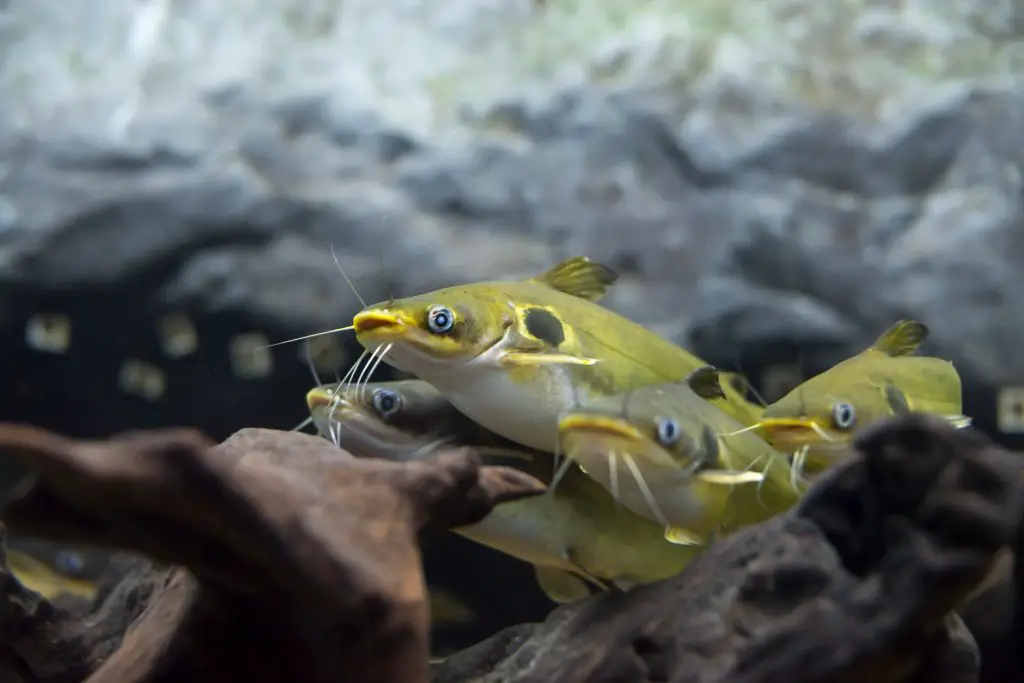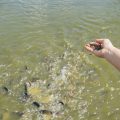Catfish do not give birth, like humans do, but the vast majority spawn. The female catfish drops the eggs, in an appropriate location to predators. Once the eggs are laid the male catfish fertilizes the eggs with its sperm. This is called substrate spawning. Many male species of catfish will then guard the eggs, which turn into baby catfish, called fry, until they are able to fend for themselves. Catfish are one of the most diverse fish that you will find in the water. There are so many species of catfish that they all have unique features and ways of functioning when it comes to birth, or better called spawning in fish.
What is reproduction in fish?
Just like in humans, reproduction produces offspring, and in fish, it is also done through the testes and ovaries. The fusion of sperm and eggs released from the ovaries results in the fry being born. Fry is a baby fish that has had some time after hatching and can feed itself. A fish remains a fry until it reaches sexual maturity and is able to reproduce itself.
Reproduction in fish usually occurs in three ways,
- The female fish drops the eggs, and the male fish immediately fertilizes them by releasing sperm.
- The fertilization occurs inside the female fish’s body before she releases eggs in a certain spot.
- Like in humans, fertilization occurs inside the female’s body, and she retains the eggs and gives live birth to the fish.
After the process of fertilization is complete, most fishes do not guard the eggs and even restore to cannibalism and eat the fry. However, some parents do guard the fish in which the male fish usually chases the female away. Interestingly, some fishes even let the fish mature a little inside their bodies or outside, usually in the mouth of male fish and sometimes female fish. Unlike humans, the reproduction of fish is unique and depends on the species of the fish.

Sexing catfish
Before getting started, it is very important to differentiate the sex of the catfish. The catfish do not need to do this in the wild, but in captivity, if we want to breed the fish, the sex has to be known. Regardless of the species, there are some differences between the male and female catfish.
Channel catfish
In the wild, channel catfish include almost 300 different species of catfishes. However, they are pretty similar in behavior so differentiating their sex is pretty easy as well.
It is very hard to have sex between different channel catfish as they look very similar. Only someone with a lot of experience and knowledge can do so. One way to sex them by the outer appearance is by looking at their heads. The male channel catfish has a huge head that is broad, muscular, and spade-shaped, and the female fish has a head that is smaller and much more rounded.
Moreover, the female fish has two openings between the pelvic fins, and the male has just one, which also has genital papillae. The bigger the fish, the easier it is to differentiate the sex.
Plecos
Plecos are a very famous aquarium catfish that is average in size. Some plecos are hard to distinguish between the male and female fish. However, some are easy, especially Bristlenose plecos.
The male Bristlenose pleco has whiskers or barbels all over its face, basically a lot of bristles. However, the female has fewer bristles and is shorter in length. This is the easiest way to identify them from the outside.
Corydoras
These catfish usually live in colonies or schools of fish. There are thousands of corydoras in the wild, but in captivity, you have to keep at least 6 to 12 of them together.
Once the fish reaches maturity, it is easy to distinguish the sex. The male catfish is long and narrow in shape, whereas the female is more rounded. This is because the female catfish has to carry the eggs in her abdomen. When close to spawning, the female fish becomes even more rounded and has a red tinge around her vent.
Otocinclus
Otocinclus catfish is one of the unique catfishes that is herbivorous and loves algae. These are also small fish that need to be kept in a school of 6 to 12 fish in the tank. Interestingly, until maturity is reached, both sexes look exactly the same. However, after they reach maturity, the female fish grows much larger and wider than the male. In fact, when the female fish is carrying eggs, she almost looks like a tadpole. On the other hand, the male fish is smaller and much slimmer, which is easy to notice.
How do most catfish reproduce?
Since it is very hard to generalize all catfish reproduction, most of them are substrate spawners. Here the female lays eggs in a predestined spot, and the male fish fertilizes them. Before spawning can take place, the water temperature has to be between 75 F and 80 F, as this is the ideal temperature for most catfish to reproduce.
The male and female catfish together build a nest hidden from predators in the submerged rocks, timbers, and weeds. The nest is unique; it is on a flat surface and is covered by bubbles that the parent fishes produce. This designated spot is where the female fish lays her eggs. After this, the male fish immediately releases sperm to fertilize the eggs.
The number of eggs released depends highly on the size of the fish. The bigger the fish, the more eggs it will lay. However, the female catfish can lay a lot of eggs, from 100 to 21,000, in one breeding session. After this, the eggs are sometimes guarded by some varieties of catfish, like the channel catfish. The male parent guards the eggs until the fry comes out, which takes around a week to 10 days.
Even after the fry come out, some catfish continue to guard them until they can start feeding by themselves, which takes around one more week. After this week, the fry is ready to leave the nest and start their own lives. Some catfishes are not this affectionate, as they eat their eggs and fry.
In conclusion, catfishes breed in whatever way suits them the best according to their environment. To make them reproduce in captivity, these conditions from the wild need to be replicated. Regardless, how catfish give birth is very important to prevent their populations from dwindling.











